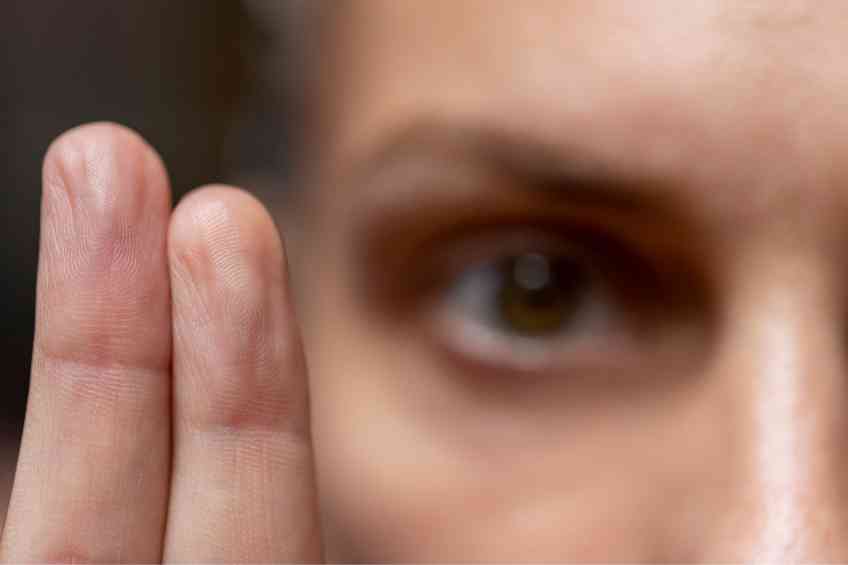By Barbara Krooss –
Lots of people are taking a close look at Eye Movement Desensitization and Reprocessing therapy or EMDR. This includes more than 203.8 million TikTok views. But what exactly are these people seeing and is EMDR worth the look?
The short answer is that EMDR is a psychotherapy developed in the 1980s by neurolinguistic programming practitioner Francine Shapiro. Many now see the therapy as a virtual wellness panacea, treating a wide variety of conditions. These include treating post-traumatic stress disorder (PTSD), anxiety, panic attacks, general stress, low self-esteem, performance anxiety, chronic pain, phobias, schizophrenia, obsessive-compulsive, depressive and bipolar disorders. Some claim it can be used to help recover from addictions, emotional reactions to grief, cancer diagnosis, heart attack, domestic violence and emergency situations.
Its popularity has been further enhanced by celebrity advocates such as Oprah Winfrey, Lady Gaga, Prince Harry, David Beckham, Justin Bieber and Sandra Bullock, among others.
EMDR involves reprocessing and adaptively resolving traumatic memories by using relaxing bilateral stimulation. This includes side-to-side alternating lights, taps, hand buzzers or tones that are designed to help undo persistent brain patterns caused by trauma. Treatment supposedly decreases the original trauma’s perceived disturbing nature and increases belief in the reformulated positive memory, measured on a 1-10 scale.
One example might include replacing the concept “I am a damaged and shamed victim” with, “I am a strong and resilient survivor.” The replacement process would be accompanied by feelings of deep release and healing.
EMDR is designed to provide quick results, typically in six to 12 once-or-twice-weekly sessions. The therapy requires less talk, self-examination and emotional upset than most psychotherapies. Another big plus for many is that it evokes celebrity-elite glamor rather than the stigma of being a “mental patient.”
Insurance providers and institutions like the Veterans Administration have been gravitating towards EMDR because it is seen as an inexpensive, rapid all-purpose remedy. It involves no medication, is physically non-invasive and is accessible to cognitively limited and minimally verbal patients.
EMDR certification is restricted to licensed mental health professionals and requires only 20 classroom hours and 20 hours of supervised practice. But EMDR certification is not needed to practice EMDR therapy. The EMDR Institute has even published a book that can teach anyone to do it. Instructional YouTube videos are also available.
The American Psychiatric Association, American Psychological Association, National Alliance on Mental Illness, Britain’s National Institute for Health and Care Excellence, U.S. Dept. of Veterans Affairs and the World Health Organization, among others all recognize EMDR therapy as an effective treatment that can be used in conjunction with other therapies.
Yet high brand awareness, sweeping impact claims, organizational endorsements, accessibility and celebrity associations don’t necessarily mean EMDR is as effective as many claim. These factors just mean that it has become extremely popular. The scientific jury, in fact, is still somewhat split on its ultimate worth and risks.
EMDR is a safe “evidence-based” therapy, according to Antonio Onofri, who announced his verdict after recently reviewing 16 research papers. Pim Cuijpers, however, isn’t as convinced. He reviewed 76 studies and concluded while that EMDR seems to have some positive effects, the quality of supportive research is “really very bad.” The problems stem from small sample sizes, potential placebo effects and clinician bias.
Critics also complain that EMDR is a “purple hat theory”—something that makes an old well-accepted principle look new by adding striking, but questionable features. In this case, visual, tactile or auditory alternating bilateral stimulation is put on top of traditional Cognitive Behavioral Therapy for Systematic Desensitization. In addition, many claim EMDR resembles meditation using affirmations. Bilateral stimulation’s side-to-side focus supposedly helps unclog a neurological traffic jam of traumatic memories in the brain’s memory-processing amygdala and hippocampus.
Unfortunately, this “new purple hat” is really “old hat.” Alternating side-to-side stimulation was used to induce a relaxed, receptive therapeutic state by 18th-century Mesmerists’ hypnotic pendulums and mid-1900’s Biofeedback that generated groovy “alpha” and “theta” brainwaves.
The elephant question in the room is whether bilateral stimulation therapeutically can alter brain activity. EMDR proponents claim it does and point to dramatic shrinkage of lurid, red-colored areas in brain scans. But similar changes—in functional magnetic resonance imaging (fMRI), magneto electroencephalogram (MEG) and single-photon emission computed tomography (SPECT) imaging—are also produced by other therapies that use relaxation for desensitization and memory reformulation. Ordinary sleep has the same effect as well, according to a 2019 report.
Another concern is whether EMDR’s wide application, which includes at-home use, leads to inappropriate use. Some critics say it treats symptoms while ignoring the cause. Others note that as a learning-based therapy, it can remedy learned problems, but biological treatments are needed for biological disorders. Some psychoanalysts warn that EMDR could even worsen deep-seated conditions by strengthening denial and dissociation—defense mechanisms that are barriers to long-term resolution.
EMDR may even cause distress. Patients can suffer from vivid dreams, heightened physical and emotional sensitivity, lightheadedness, anxiety and headaches. Admittedly, these typically go away after a few sessions.
Yet another concern is that EMDR does not yield lasting results. One meta-analysis noted that EMDR produced only a short-term decrease in major depressive symptoms, while long-term remission rates resembled those of “no treatment” controls. Like other learning-based treatments, EMDR is subject to “spontaneous recovery” of extinguished behavioral responses.
Ultimately, anyone embracing EMDR through a certified professional or via an at-home application needs to first take an extremely hard look at this therapy.













